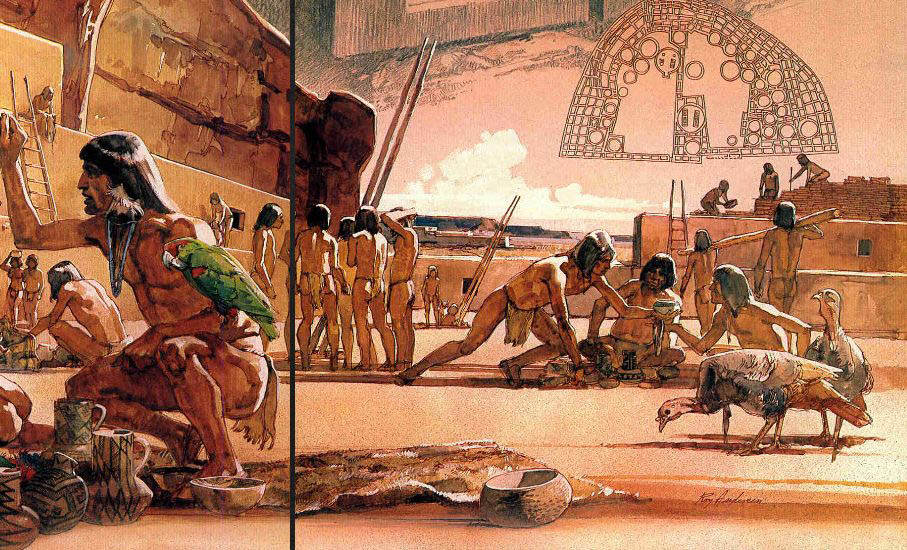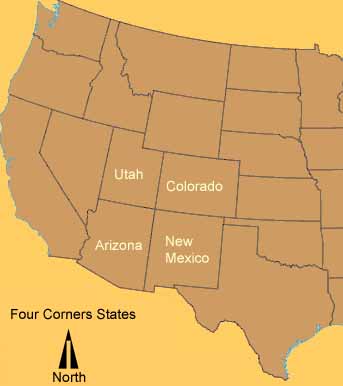
Anasazi Puebloans
The Ancestral Puebloans were an ancient Native American culture that spanned the present-day Four Corners region of the United States, comprising southeastern Utah, northeastern Arizona, northwestern New Mexico, and southwestern Colorado. The Ancestral Puebloans are believed to have developed, at least in part, from the Oshara Tradition, who developed from the Picosa culture.
They lived in a range of structures that included small family pit houses, larger structures to house clans, grand pueblos, and cliff-sited dwellings for defense. The Ancestral Puebloans possessed a complex network that stretched across the Colorado Plateau linking hundreds of communities and population centers. They held a distinct knowledge of celestial sciences that found form in their architecture. The kiva, a congregational space that was used chiefly for ceremonial purposes, was an integral part of this ancient people's community structure.
In contemporary times, the people and their archaeological culture were referred to as Anasazi for historical purposes. The Navajo, who were not their descendants, called them by this term. Reflecting historic traditions, the term was used to mean "ancient enemies". Contemporary Puebloans do not want this term to be used.
Archaeologists continue to debate when this distinct culture emerged. The current agreement, based on terminology defined by the Pecos Classification, suggests their emergence around the 12th century BC, during the archaeologically designated Early Basketmaker II Era. Beginning with the earliest explorations and excavations, researchers identified Ancestral Puebloans as the forerunners of contemporary Pueblo peoples. Three UNESCO World Heritage Sites located in the United States are credited to the Pueblos: Mesa Verde National Park, Chaco Culture National Historical Park and Taos Pueblo.
Ancient Pueblo People, or Ancestral Puebloans, is a preferred term for the cultural group of people often known as Anasazi who are the ancestors of the modern Pueblo peoples. The ancestral Puebloans were a prehistoric Native American civilization centered around the present-day Four Corners area of the Southwest United States.
Archaeologists debate when a distinct culture emerged, but the current consensus, based on terminology defined by the Pecos Classification, suggests their emergence around 1200 B.C., the Basketmaker II Era.

They inhabited the area that is present-day Arizona, Colorado, Utah and New Mexico, called the Four Corners. They are known for mud-brick villages located along edges of canyons or atop mesas. The civilization is perhaps best-known for the jakal, adobe and sandstone dwellings that they built along cliff walls, particularly during the Pueblo II and Pueblo III eras.
The best-preserved examples of those dwellings are in parks such as Chaco Culture National Historical Park, Mesa Verde National Park, Hovenweep National Monument, Bandelier National Monument, and Canyon de Chelly National Monument. These villages, called pueblos by Mexican settlers, were often only accessible by rope or through rock climbing. From Ellie Crystal